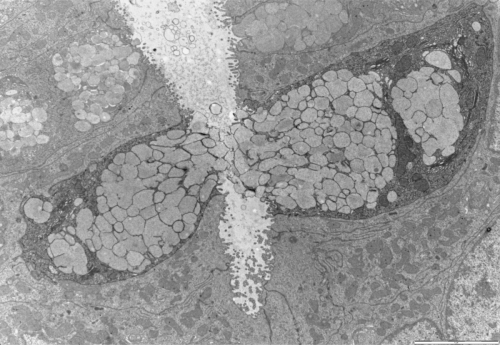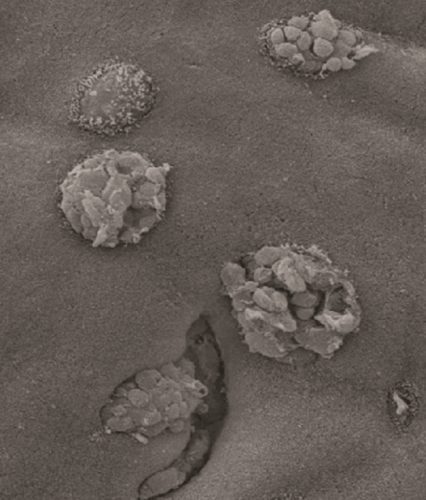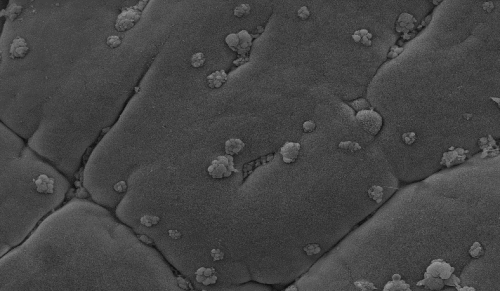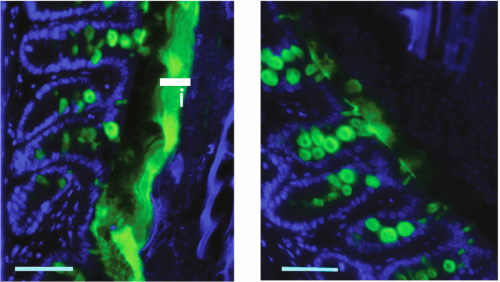A central role in protecting against the penetration of bacteria from the intestine to the rest of the body is reserved for the "goblet cells", epithelial cells with a unique structure and properties, which secrete various substances to repel invaders.

One of the body's most important lines of defense is found in the digestive system. A thin layer of cells, the epithelial cells, separates the inner space of the intestine, where the most dense populations of bacteria on the planet reside, and the sterile tissues on the other side, prevents the penetration of bacteria and disease agents into the body, and maintains the balance in the intestine. A central role in defense is reserved for the "goblet cells", epithelial cells with a unique structure and properties, which secrete various substances to ward off invaders. For years, scientists considered them rather "stupid" cells, which produce and secrete substances into the intestine without planning and control. Research by an international team of scientists, led by researchers from the Weizmann Institute of Science, the University of British Columbia, and Yale University, has now discovered for the first time that a sophisticated control mechanism operates in the goblet cells that regulates the secretion of substances from them, and located the main players in it. The research findings, recently published in the journal Cell, reveal the mechanisms responsible for the complex interrelationships between the bacterial populations and the body that stores them.
The importance of goblet cells for maintaining human health is not in doubt: it is known that mice that do not contain goblet cells tend to suffer from repeated diseases and infections. The goblet cells, which make up about one-tenth to one-fifth of all epithelial cells, secrete antibacterial proteins into the intestinal cavity, a kind of natural antibiotic, as well as mucus: a gel-like antimicrobial substance that screens the intestinal walls, preventing the penetration of bacteria into the tissues. In fact, these are efficient "factories", which produce the vital substances, package them in bubbles, lead them to the cell membrane, and release their contents outside. These facts have been known for about 100 years, but until today scientists have not been able to identify the control factors that determine, for example, when the secretion mechanisms will come into action and which substances will be secreted.
The current research, which was done on mice, in which the research students Christoph Theiss, Mein Levy and Merav Katz from the group of Dr. Eran Alinev, from the Department of Immunology at the Weizmann Institute of Science, the group of Prof. Brett Finley from the University of British Columbia, and the group of Prof. Richard Flavel from the University of Yale, discovered that at the heart of the control mechanism is a unique protein cluster called the inflammasome. This is a "sensor" that monitors the bacterial population: it is created following a series of precise signals that are transmitted in the cell, and executes an inflammatory response. In the past, Dr. Alinev discovered the first inflammasome expressed in epithelial cells, and now it has become clear that the main cells in which it is formed are the goblet cells, and that its function is to regulate the secretion of bubbles from these cells. When the scientists created goblet cells that do not contain an inflammasome, the antibacterial substances were indeed formed and packaged in bubbles, but the bubbles were not released into the intestinal cavity and did not form a proper protective layer.

The scientists discovered that without an inflammasome, the body's ability to protect itself by secreting mucus or antibiotic proteins is impaired. As a result, disease-causing bacteria manage to easily adhere to the intestinal tissue and penetrate it, and thus may cause disease. The imbalance also affects the populations of bacteria that do not normally cause diseases: the absence of the defense mechanisms allows them to reproduce, come into more direct contact with the body, and increase the vulnerability to a variety of diseases such as intestinal infections, obesity, diabetes and cancer.

Later, the scientists wanted to check how exactly the inflammasome affects the secretion of bubbles from the goblet cells. They discovered that the control process involves a familiar cellular mechanism called autophagy. Autophagy was initially identified as a mechanism that is activated in times of starvation or other stress, and allows the cell to reuse the cell's components in order to survive - "eat itself". It later turned out that the same mechanism is involved in the secretion processes: it is the one that causes the vesicles to mature, and as a result they begin to make their way to the cell membrane. In other words, the findings show that in the goblet cells, the secretion of antibacterial substances is controlled by the inflammasome, which acts by influencing the autophagy mechanism.
The research findings reveal for the first time how an important control mechanism works that dictates the interactions between the bacterial populations in the gut and the body cells that house them. These interactions are critical to the normal functioning of the body, and their violation may cause a variety of diseases. "In addition to this," says Dr. Alinev, "the research shows that the epithelial cells of the intestine, which interact directly with the external environment in the intestine, and in particular the goblet cells, are actually immune cells - an important and inseparable part of the innate immune system. This has the effect of expanding our understanding of the immune system. Understanding the molecular mechanisms by which the body controls the bacterial populations within it can lead to the development of new targeted treatments against common human diseases."

